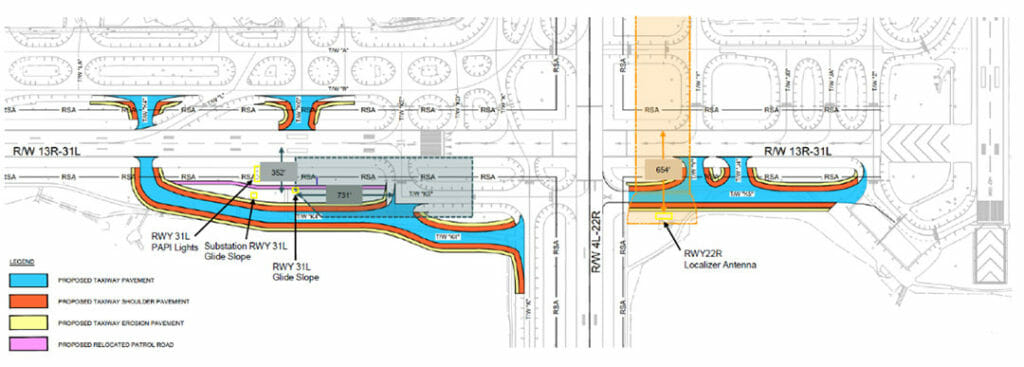
JFK International Airport is the busiest international air passenger gateway into North America, the 20th-busiest airport in the world, the sixth-busiest airport in the United States, and the busiest airport in the New York airport system, having handled over 62.5 million passengers in 2019.
The extension of Taxiway K4 was a necessary project to reduce congestion, conflicts, and deficiencies within the southeast quadrant of JFK International Airport, the 5th busiest airport in the nation with ground delays exceeding the national average. The objective of the extension of K4 would be to relieve aircraft taxiing traffic and congestion at the intersection of the two primary departure runways for the airport, sometimes referred to as “Times Square” and to address separation standards required for the critical aircraft at JFK. The design project was based upon a planning study prepared by DY Consultants. This project is extremely important to increase efficiencies and reduce the level of congestion on the airfield.
There were several challenges related to the design of this project. The project site is extremely constrained due to environmentally sensitive lands (Jamaica Bay National Reserve), physical constraints (Jamaica Bay itself and retention walls) and operational constraints (to accommodate critical areas associated with navigational aids, such as those associated with the 31L Glide Slope and the 22R Localizer.
DY’s engineering design scope included:
- Construction Phasing and Staging Alternatives and Recommendation
- Taxiway Lighting System, including centerline lights, stop bar lights, lead on/off lights, intermediate hold line lights and runway guard (wig-wag) lights.
- Mandatory, Destination and Directional Signs for CAT II Operations
- Electrical Circuitry for all primary and secondary cabling, new isolation transformers and connector kits for the lighting system.
- Airfield Pavement Markings
